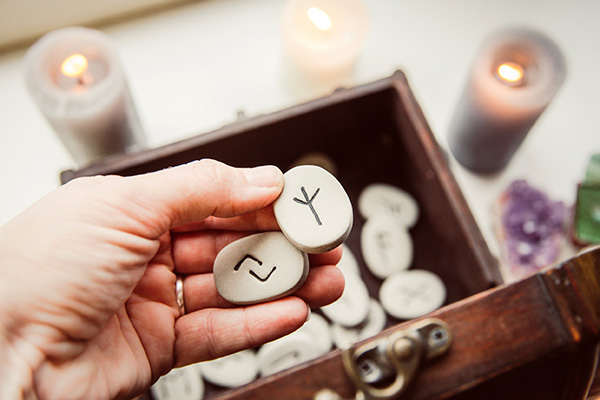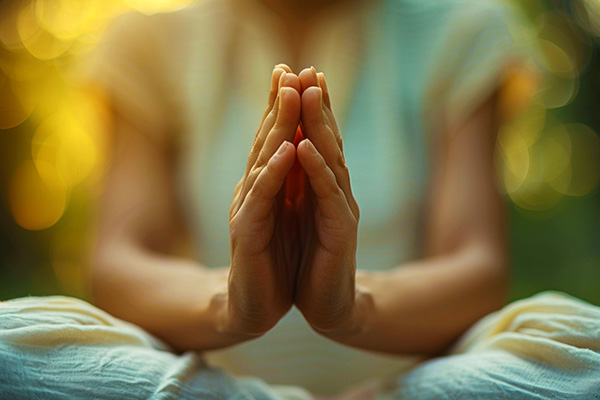ancient wisdom
Connecting With Gaia Through The Art Of Dowsing
 I’ve always loved working with dowsing rods. Over the years, I’ve used them in many different ways, such as tracking down lost car keys, finding jewelry, and locating missing household items in the most unlikely places.
I’ve always loved working with dowsing rods. Over the years, I’ve used them in many different ways, such as tracking down lost car keys, finding jewelry, and locating missing household items in the most unlikely places.
Dowsing is a wonderful intuitive practice. I’ve dowsed for many things over the years, but water dowsing has always fascinated me, because it connects nature and the physical world with the spiritual and mystical.
While digital technology and scientific methods have become the preferred tools used by engineers and geologists to accurately locate groundwater, pipes, and leaks, the ancient art of water dowsing is still practiced today. This practice is often called “water witching” in some parts of the United States.
Many farmers and homeowners still hire dowsers to find well locations, especially in rural areas. In fact, some professional water companies and utility providers have been known to also use dowsing rods to help locate pipes and leaks, alongside modern technology.
For me, this way of tuning into the earth’s natural flow and sensing what lies beneath the soil is deeply grounding and primal. It feels like aligning with the consciousness of the Earth herself, to Gaia, or Mother Nature. Gaia is more than a poetic metaphor; she is a living, breathing entity whose subtle energies speak to us if we know how to listen.
When I dowse for water, I feel as though I’m entering into quiet communion with her. I am attuning to her rhythms, her hidden pathways, and her silent wisdom. It’s a sacred act of reconnection, a reminder that we are not separate from nature, but part of her great, mysterious web of existence.
The Spiritual Power Of The Words You Speak
 Have you ever stopped to truly consider the words you speak? Most of us talk all day, every day, without realizing the impact of each syllable we send out into the world.
Have you ever stopped to truly consider the words you speak? Most of us talk all day, every day, without realizing the impact of each syllable we send out into the world.
Words are much more than just communication sounds. They’re vibrations, frequencies, and intentions. Whether spoken softly, shouted out loud, or whispered quietly to yourself, every word carries mystical energy.
In many spiritual traditions, the spoken word is seen as a powerful metaphysical force or divine power. It is a force of creation and transformation.
From magical incantations to sacred ceremonies, words have long been used to shape everyday reality, influence the world and improve life.
The earliest recorded reference to the power of speech dates back to ancient Mesopotamia. In the city of Uruk, magical incantations were found carved onto clay tablets dating back to approximately the 5th century BCE. These spoken spells were used for protection, healing, and influencing others, revealing a deep understanding of the energetic and powerful nature of speech as early as 2,500 years ago.
Around the same time, the ancient Egyptians believed in the concept of heka, which is often translated today as “magic” but really means “divine creative power.” They believed the gods used heka to create the world, and that humans could access this same creative power through sacred words called hekau.
Start Your Day With An Empowering Rune Meditation
 The runes may hail from a distant past, but their wisdom is timeless.
The runes may hail from a distant past, but their wisdom is timeless.
Originally carved into stone and wood by the Germanic and Norse peoples over a thousand years ago, runes are much more than an archaic writing system. They are sacred symbols, each representing archetypal truths, elemental forces, and spiritual awareness.
Warriors, healers, seers, and travelers carried these symbols as talismans to protect themselves, receive guidance, and connect with the unseen energies of life.
In a world dominated by fleeting digital messages and materialistic values, the ancient Nordic runes still whisper their ancestral wisdom across the millennia.
They are energetic sigils—mystical symbols designed to invoke change, inspire clarity, and restore harmony with the cycles of nature and spirit.
Each rune pulses with a unique frequency—a metaphysical code capable of unlocking personal insight, inner strength, and spiritual transformation. Etched into stone by hands long vanished, the runes carry the weight of sacred intention.
They remind us that language and symbolism are instruments of creative power, not just tools for communication. Integrating runes into our modern lives reconnects us with an ancient way of knowing that speaks of path, purpose, and destiny.
Feeding The ‘Good Wolf’ Changes Everything!
 Since childhood, I have been fascinated by parables, folk tales and fables. I realized at a young age that there is something truly inspiring about a story that not only entertains, but carries a deeper message or spiritual lesson and speaks directly to the heart.
Since childhood, I have been fascinated by parables, folk tales and fables. I realized at a young age that there is something truly inspiring about a story that not only entertains, but carries a deeper message or spiritual lesson and speaks directly to the heart.
This love of meaningful stories hasn’t diminished over time. I still find myself drawn to stories that offer wisdom, healing, and perspective.
A few years ago, I came across a beautiful Cherokee story — one that spoke volumes to me and offers guidance to many of us as we navigate the emotional terrain of modern life.
The story goes that a young Cherokee boy found himself in a dispute with a friend. The boy felt that his friend had treated him unfairly. Hurt, and burning with anger, he stormed off to find his grandfather, a revered elder of their tribe who was known for his wisdom.
Sitting with his wise grandfather, the boy poured out his frustration, sharing the injustice he felt and the fire of anger that burned within him.
The old man listened patiently, his eyes pensve and kind. Then, with a nod, he spoke:
“I too have felt great anger at those who have taken from me what was not theirs or who have treated me unjustly. But anger wears on the soul like fire on dry grass. It consumes you if you are not careful.”
He paused, then continued, “You see, it is as if two wolves are fighting within me. One is full of anger, envy, sorrow, regret, greed, arrogance, self-pity, guilt, resentment, lies, false pride, superiority, and ego. This is the evil wolf. He lashes out, trusts no one, and isolates himself from the world.”
The Spiritual Implications Of The Lazarus Syndrome
 Recently, while watching the 2008 film The Lazarus Project, I was reminded of the paranormal phenomenon of near-death experiences (NDEs) and became intrigued by the possibility of someone coming back to life after death.
Recently, while watching the 2008 film The Lazarus Project, I was reminded of the paranormal phenomenon of near-death experiences (NDEs) and became intrigued by the possibility of someone coming back to life after death.
The plot of the movie is about a man who is given a second chance at life after being executed for a crime. Despite being lethally injected, he somehow wakes up in a psychiatric hospital and must overcome a series of mysterious and mystical challenges to be reunited with his family.
The title, of course, refers to the story in John 11 of a man named Lazarus who was raised from the dead by Jesus after four days. While the plot of the movie does not directly parallel the biblical story, it does draw on the themes of resurrection and second chances.
My newfound curiosity soon led me to discover a documented medical phenomenon known as “Lazarus Syndrome.” Also known as the “Lazarus phenomenon” or “autoresuscitation,” it is a rare medical condition in which a person spontaneously comes back to life after all attempts at resuscitation have failed and the person has been pronounced dead.
The phenomenon was first noted in medical literature in 1982 by Finnish anesthesiologist Dr. Kalevi Linko, who described it as the spontaneous return of circulation after resuscitation efforts have ceased. The term “Lazarus phenomenon” was later popularized by Dr. John Francis Bray in 1993, who used the biblical reference to describe these rare cases of patients who spontaneously return to life.
Seeing The Spiritual Essence In Others
 My world was turned upside down when my father was diagnosed with pancreatic cancer. For seven agonizing months in 2005, I became his caregiver, managing the extreme emotional and physical toll of his illness.
My world was turned upside down when my father was diagnosed with pancreatic cancer. For seven agonizing months in 2005, I became his caregiver, managing the extreme emotional and physical toll of his illness.
Even the hospice staff, experienced in end-of-life care, commented at the time that my father was not an easy patient to care for. Their observation confirmed my own feelings on the matter and highlighted the unique challenges of the difficult karmic relationship I had with my father.
Throughout this stressful time, I held out hope for a miracle. I felt compelled to seek guidance, but unfortunately Spirit revealed a timeline of six to twelve months. This devastated me at the time, but I’ve since come to accept that arrivals and departures are part of every soul’s journey. Spirit was simply confirming a poignant truth: at some point we are all called home to the spirit realm.
Despite his resistance to any form of treatment, my father allowed a trusted colleague of mine, a master in his healing modality, to visit our home weekly for body alignment sessions. These sessions became a turning point — not only for my father, but for me as well.
During their second session, my healer friend shared an observation that struck a deep chord. He sensed an immense amount of bitterness and resentment in my father, energies he had perceived without any prior knowledge of my father’s emotional state or life history. He then offered me a piece of wisdom that changed the way I viewed not only my father, but all of my relationships: “Try to see only the true spiritual essence that is your father.”
